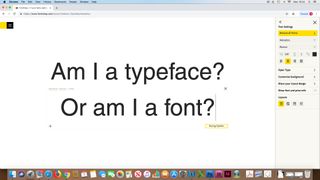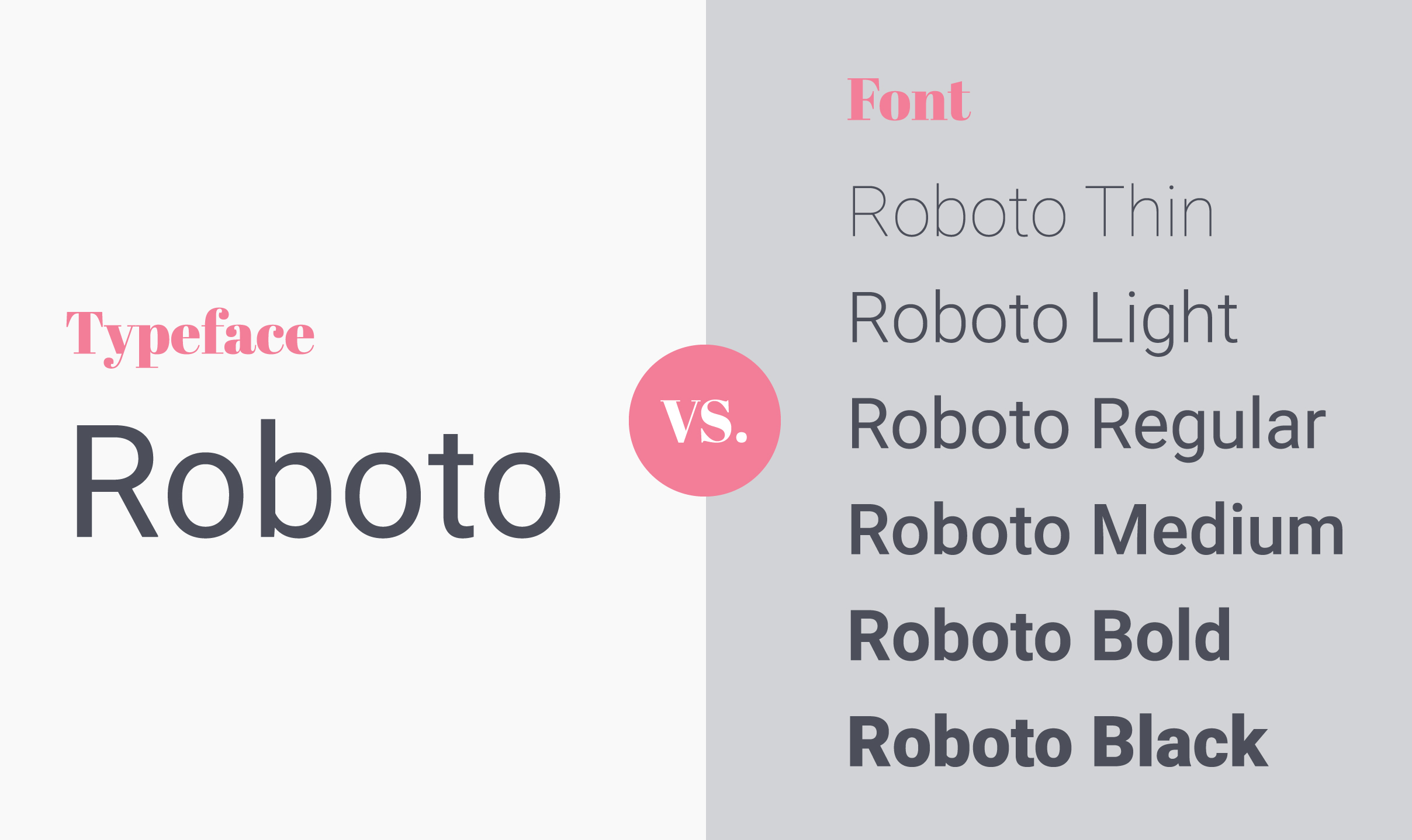One typeface can have several fonts based on the intended final product. Rudik 331 1 year ago.

Font Vs Typeface The Ultimate Guide Creative Bloq
Each font of a typeface has a specific weight style condensation width.

. The word font comes from the French word fonte which means cast in metal. A typeface is a set of glyphs or sortsletters and accessories like numbers and punctuationthat have common design features. Typeface often called a font is a set of lettering or characters that have specific characteristics for design size weight italics etc.
Most typefaces include a number of fonts although there are a growing number of contemporary ones that just offer one font. If a font is serif it has small lines or characters added to the ends of the characters to exaggerate andor decorate the characters in their basic form. These refer to the size style and weight of the typeface to be used to get certain effects out of print.
A typeface is what you see and the font is h0w you use it. The main difference between a font and a typeface is that the former exists as part of the latter. The word typeface historically refers specifically to the shape and style of the letters organized into a set based on the alphabet numbers and punctuation needed to completely express language.
A typeface is the design of lettering that can include variations in size weight eg. It may include fonts of multiple weights romanitalic stylistic variants and even different optical sizes used to replicate the subtle design modifications in different sized metal fonts. Condensed and so on.
A font is a particular weight style size and effect of a typeface. You can also say that a typeface is a family of fonts. For example most teachers like it when their students use Times New Roman font.
Some popular typefaces include Arial Helvetica Times and Verdana. The meaning of TYPEFACE is all type of a single design. A typeface is a set of characters of the same design.
While most computers come with a few dozen typefaces installed there are thousands of typefaces available. Fonts are used to describe the subsets of the typeface. A typeface is a particular design of type.
To put it in simple terms each variation of a. When many such variants are offered as in the case of Helvetica it is often referred to as a type family. Typeface vs Font A typeface is the name given to a collection of related fonts which themselves The modern design world has a seemingly endless supply of typefaces to choose from.
These features include the weight and balance of the letters the difference in height between uppercase and lowercase letters and the presence or absence of serifs. A typeface is the collective name of a family of related fonts such as Times New Roman while fonts refer to the weights widths and styles that constitute a typeface such as Times New Roman. In comparison font refers to a particular weight width and style within that typeface.
Just like real families typefaces have different characters inside it. So the collection of letter shapes that we know of as Arial or Times New Roman is called a typeface. A typeface is one or more fonts of unified design.
With that being said Medium Times New Roman 12-point is a different font from Bold Times New Roman 24-point. Fonts on the other hand are the style effect or weight of a typeface. Serif font is a sub category of typeface.
A font is a particular weight style size and effect of a typeface. A typeface is a collection of characters sharing the same design features. What is a typeface.
Explain the difference between serif font and sans-serif font. There are thousands of different typefaces in existence. Using the Helvetica typeface as an example Helvetica is made up of 51 fonts of differing styles sizes and weights.
A typeface is basically a type family a collection of a set of certain related fonts. Helvetica is a typeface a complete set of sans serif characters with a common design ethos. These characters include letters numbers punctuation marks and symbols.
In typography a typeface also known as font family is a set of one or more fonts each composed of glyphs that share common design features. In this article well discuss the difference between typefaces and fonts how to combine them and what pitfalls you should try to avoid. Each of these variations of the typeface is a font.
Each font has a specific condensation italicization width etc. Serifs are semi-structural details or small decorative flourishes at the ends of some strokes that have made letters and symbols. Sans serif does not have these details or flourishes.
Using the Helvetica typeface as an example Helvetica is made up of 51 fonts of differing styles sizes and weights. The main difference between these two terms is that a typeface or type family is the name of a specific collection of related fonts. Typefaces are laid out pre-defined and follow the rules of how you must use them whereas a font can be illustrated styled and enhanced as per the requirement of your interface.
And you can even have more than one family within the same family sharing the same surname. How to use typeface in a sentence. Another example would be the Arial font.
Most typefaces include a number of fonts although there are a growing number of contemporary ones that just offer one font.

What Is The Difference Between A Font And A Typeface Snowball


0 Comments